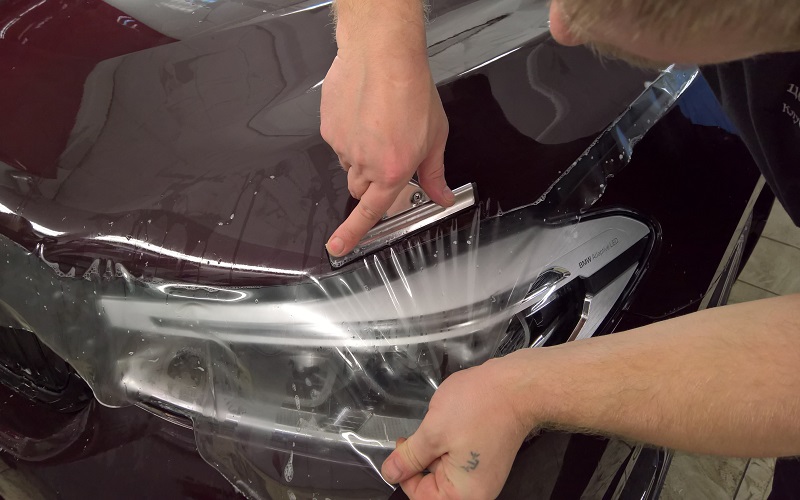Paint protection film (PPF) is a clear, strong layer that protects your car’s paint from scratches, stains, and environmental damage.
This guide covers everything you need to know about PPF: what is paint protection film, its benefits, how it has evolved, the different types available, and tips for installation and maintenance.
Understanding Paint Protection Film (PPF)
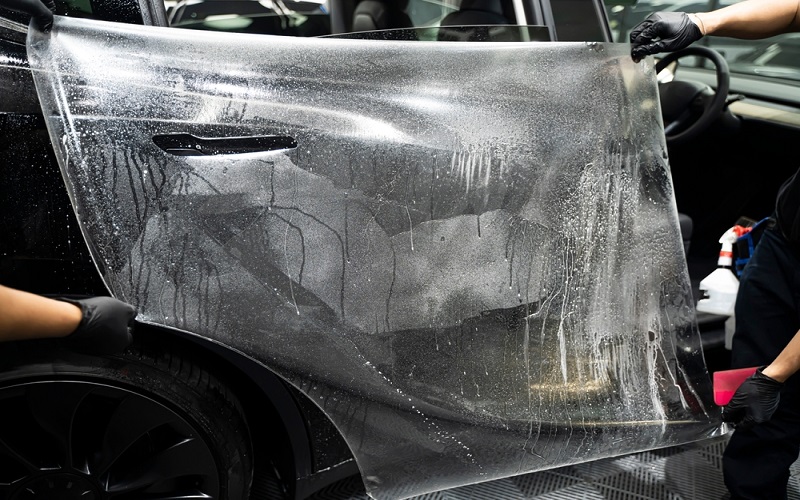
Paint protection film (PPF), specifically TPU paint protection film, is a clear, durable material applied to a vehicle’s painted surfaces to safeguard against scratches, stains, and environmental elements.
This protective layer acts as a barrier, preserving the car’s paint from daily wear and tear, such as rock chips, bug splatters, and minor abrasions. TPU paint protection film serves as a second skin for your car, maintaining its showroom condition.
PPF, often made with materials like TPU coated webbing or PVC coated webbing, primarily protects the car’s paint from damages that can reduce its appearance and value. Modern PPF materials, such as TPU paint protection film, are designed to be strong yet flexible, ensuring they adhere seamlessly to the vehicle’s surface while providing superior protection for the paint.
Regardless of whether you drive a luxury car or a daily commuter, TPU paint protection film helps maintain your vehicle’s aesthetic and resale value.
The Evolution of Paint Protection Films

The story of paint protection film dates back to:
- The Vietnam War, when 3M developed a protective film to shield helicopter rotor blades from debris. This innovation marked the birth of a technology that would later evolve to protect the paint underneath car surfaces.
- The 1980s, when paint protection films entered the automotive PPF market, initially applied to high-end racing cars.
- The 1990s, when these films became accessible to everyday consumers, offering a practical solution to car owners wanting to preserve their vehicle’s appearance and protect the paint underneath.
Today’s paint protection films have come a long way from their early iterations. Modern advancements in chemical properties have minimized issues like yellowing, ensuring that the film remains clear and virtually invisible.
Modern films feature UV protection, hydrophobic paint protection film properties, stain resistance, and enhanced durability, making them a popular choice in the PPF market for long-term protection against environmental damages and daily wear. The latest generation paint protection film offers even more benefits for vehicle owners.
Types of Paint Protection Films
Paint protection films come in various types, each offering different levels of protection and benefits. The main types include:
- Thermoplastic Polyurethane (TPU)
- Thermoplastic Hybrid (TPH)
- Polyvinyl Chloride (PVC) Each type has unique characteristics that cater to different needs and budgets.
Knowing these differences can guide you in choosing the best PPF material for your vehicle.
Thermoplastic Polyurethane (TPU)
Thermoplastic Polyurethane (TPU) is considered the gold standard in paint protection films. Known for its:
- Superior flexibility and durability
- High resistance to scratches, stains, and environmental contaminants
- Self-healing capability, where minor scratches and swirls disappear when exposed to heat, such as sunlight, warm water, or heat guns
This ensures that the clear film maintains its pristine appearance while providing excellent protecting surface protection.
Unlike traditional PVC films, TPU films do not crack, yellow, or lose their elasticity over time, making them a long-lasting solution for car owners seeking tailored solutions. Having a lifespan of 5 to 10 years, TPU PPF offers significant long-term benefits.
Its ability to resist UV radiation and environmental elements further enhances its protective qualities, making it a preferred choice for those looking to preserve their vehicle’s paint. TPU performs exceptionally well in diverse conditions, ensuring lasting protection and aesthetic appeal.

Thermoplastic Hybrid (TPH)
Thermoplastic Hybrid (TPH) combines the properties of polyurethane and PVC, offering a balanced solution in terms of cost and effectiveness. While TPH films are not as advanced as TPU in terms of flexibility and self-healing capabilities, they still provide robust protection against minor scratches and environmental elements, thanks to their chemical stability.
This makes them a highly flexible option for car owners looking for a cost-effective yet reliable PPF solution, particularly when processed by skilled film processors.
Although TPH film does not possess the self-healing properties of TPU, it is more effective than traditional materials like PVC films. The hybrid composition of TPH material provides decent durability at a more affordable cost, making it a practical choice for budget-conscious car owners.
Polyvinyl Chloride (PVC)
Polyvinyl Chloride (PVC) is the most basic and affordable option among paint protection films. As the first-generation PPF, PVC films provide a fundamental level of protection against scratches, stone chips, and minor abrasions. However, they are not as durable or flexible as TPU or TPH films, and they lack advanced features such as self-healing and UV resistance.
Despite its limitations, PVC PPF is popular for its affordability. It suits car owners seeking a budget-friendly option to protect their vehicle’s paint from daily wear, especially when maintained with regular washing.
However, it’s important to note that PVC films may not offer the same level of long-term protection and aesthetic appeal as more advanced PPF materials, often having a shorter service life.
Benefits of Using Paint Protection Film
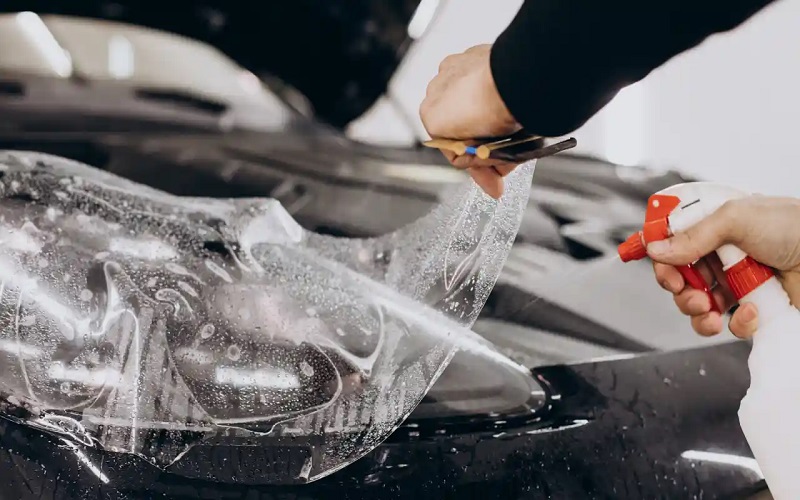
A significant benefit of paint protection film is its ability to maintain a vehicle’s resale value. PPF keeps the exterior pristine, ensuring the car looks as good as new, even after years of use. This can make a substantial difference when it comes time to sell or trade-in the vehicle.
High-quality PPF provides:
- Superior protection against environmental damages like intense sunlight, gravel, and acidic substances.
- Improved protection against scratches and impacts due to higher film thickness, especially in high-risk areas like the front bumper and side mirrors.
- A nearly invisible design that enhances the car’s aesthetic appeal rather than detracting from it.
Many PPF products also come with warranties of up to a lifetime, providing long-term assurance for vehicle owners. Once applied, the film lets you drive with confidence, knowing your car’s paint is protected against the elements and daily hazards.
Key Features of High-Quality PPF
When choosing a paint protection film, consider key features that indicate high quality. UV resistance is crucial, as it prevents the film from yellowing and protects the car’s paint from fading due to sun exposure. This helps your vehicle maintain its original color and shine for years.
Self-healing properties are another critical feature, allowing minor scratches to disappear when exposed to heat. This keeps the film looking flawless and maintains its protective capabilities. Additionally, high-quality PPF often includes hydrophobic coatings that repel water and debris, making it easier to clean and maintain.
The thickness of the film also plays a significant role in its effectiveness. A thicker film, typically around 8 to 12 mils, provides enhanced protection against scratches and impacts. It’s essential to match the film thickness to your driving habits and environmental exposure to ensure optimal protection and longevity.
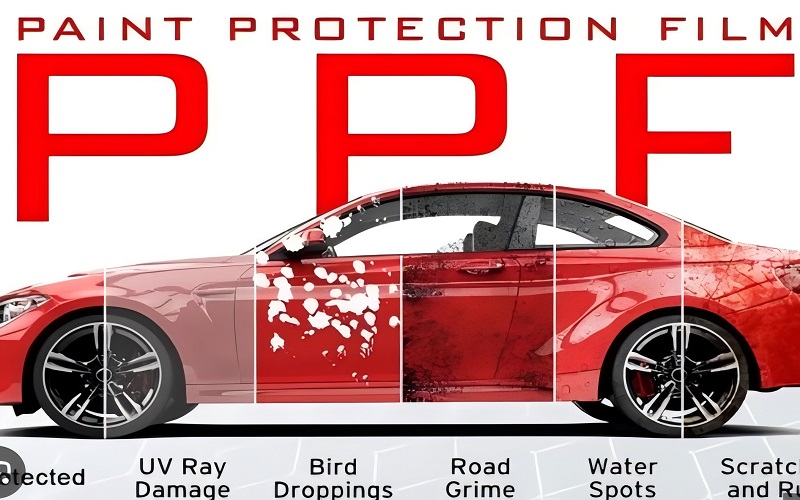
Professional vs. DIY Installation
Proper installation is crucial for achieving optimal results with paint protection film. Professional installers often utilize custom-cut templates to ensure a precise fit, preventing misalignment and defects. Consulting with a professional installer can help tailor your PPF choice based on specific needs related to your vehicle type and usage.
While DIY installation kits are available and can be more cost-effective, they require specific tools and a good deal of patience. Achieving a factory-like finish without professional skills and experience is challenging, and DIY installation can be significantly more time-consuming.
If not done correctly, it can lead to visible seams, bubbles, and reduced protection. Professional installation can help avoid these issues.
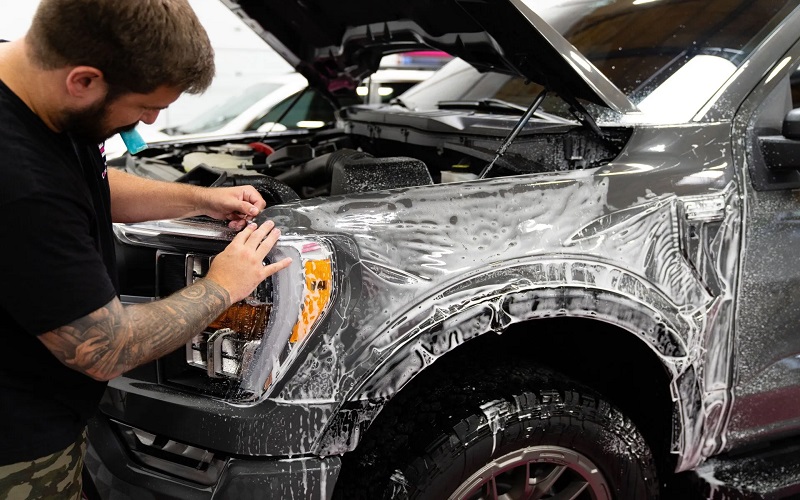
Maintenance Tips for PPF
To keep your paint protection film in top condition, regular maintenance is essential. It’s advisable to clean contaminants like bird droppings and tree sap immediately to prevent lasting damage. Using pH-neutral soap when washing your vehicle with TPU PPF is recommended to avoid harming the film, especially since acid rain can also affect its durability.
Avoiding harsh cleaners is crucial to maintaining the integrity of the PPF. Use a microfiber towel to dry the vehicle after washing to prevent swirl marks and water spots on the film.
Regular visual checks for signs of wear can facilitate early intervention and reduce the need for extensive repairs.
Common Myths About Paint Protection Films
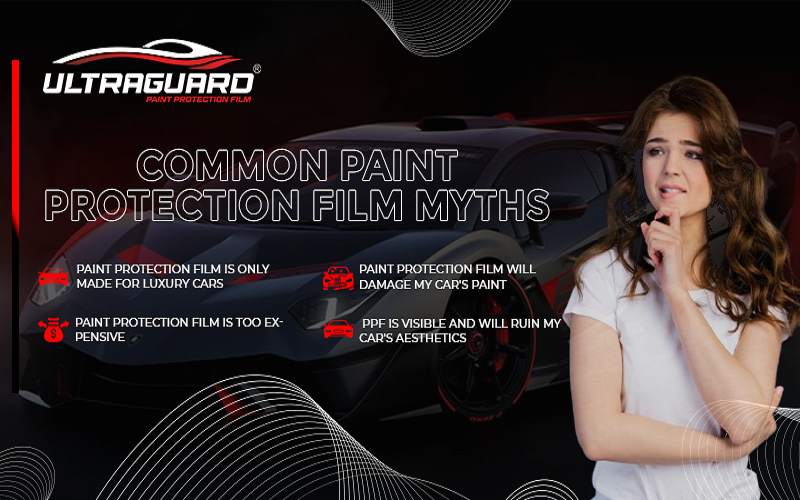
A common myth is that paint protection film can withstand any type of damage without consequence. Although PPF provides significant protection against minor scratches and environmental elements, it is not impervious to all harm, especially from sharp objects or high-velocity impacts. It’s essential to be aware of these limitations to set realistic expectations.
Another misconception is that PPF ruins the car’s appearance. Modern paint protection films are designed to be nearly invisible and can even enhance the car’s aesthetic appeal. Understanding these myths and the facts behind them helps car owners make informed decisions about using PPF.
How to Choose the Right PPF for Your Vehicle
Selecting the right PPF for your vehicle depends on factors like budget, vehicle type, and driving habits. TPU PPF is preferred for its superior protection and self-healing properties, but it is also the most expensive.
TPH PPF offers a balance between cost and effectiveness, making it a practical option for many car owners. Additionally, tpu based ppf provides an excellent alternative for those seeking high-quality protection.
For those on a tight budget, PVC PPF provides basic protection but lacks the advanced features of TPU and TPH films. Consider the environmental exposure your vehicle faces, such as UV rays and road debris, when choosing a PPF. A professional installer can help tailor your choice to your specific needs, ensuring optimal protection for your vehicle.

Summary
In summary, paint protection film is an invaluable investment for any car owner looking to preserve their vehicle’s appearance and resale value.
From understanding the different types of PPF to learning about the benefits and maintenance tips, this guide provides comprehensive insights to help you make an informed decision.
Whether you choose TPU, TPH, or PVC, protecting your car’s paint will ensure it remains in pristine condition for years to come.
Frequently Asked Questions
What is paint protection film (PPF)?
Paint protection film (PPF) is a clear, robust material that protects your vehicle’s paint from scratches, stains, and environmental damage. Applying PPF can significantly preserve your car’s appearance and value.
How long does TPU PPF last?
TPU PPF generally lasts between 5 to 10 years, influenced by the film’s quality and environmental conditions. Proper installation and maintenance can help maximize its longevity.
Can I install PPF myself?
You can install PPF yourself using DIY kits, but for the best results and a professional finish, it’s advisable to seek professional installation due to the skills and tools required.
Will PPF ruin the appearance of my car?
No, modern PPF is nearly invisible and can enhance your car’s appearance by preserving its original paint finish.
What are the benefits of using paint protection film?
Using paint protection film (PPF) preserves your vehicle’s resale value by providing long-term defense against environmental damage while enhancing its aesthetic appeal. This protective layer ensures your car’s paint remains in excellent condition.

